There’s still a bit of Canada in Jason Dunda. This can be clearly seen in his current aesthetic investigations. As an expat living in a precarious time where America’s divisive ideologies are grossly amplified and nationalistic fervor is at fever pitch, Dunda is now focused upon examining the imbalanced power structures in our culture through a series of drawings, paintings and sculptures. This week the COMP Magazine ran down to Back-of-the-Yards to discuss with Dunda his introduction to art while living in Canada, his recent solo exhibit at the MacLaren Art Centre in Barrie, Ontario, the relationship his studio practice has upon his teaching, and his upcoming exhibitions at FLXST and Sidecar.
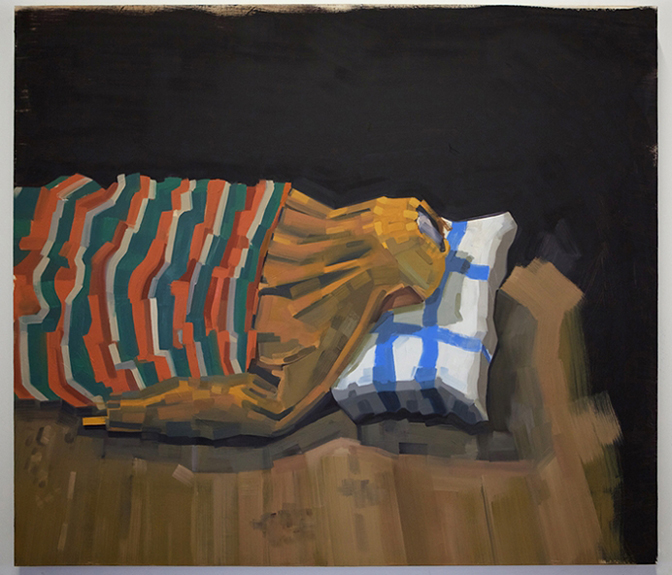
You are from up north, near Toronto, but now call Chicago home due to having lived here for more than 20 years. I’m rather fond of Canada and am curious to what role the arts played in your youth. Can you share with us any early encounters or people that stick out in relation to your ongoing aesthetic practice?
I lived and worked for a number of years in a great busted warehouse with twenty foot ceilings and ran an art supply store – I’d work during the day then paint til 2am, sleep for a few hours, then do it all over again. I was in my 20’s and so full of energy and ambition and after just a few years it paid off. Like Chicago, Toronto has a long tradition of artist-run culture. My first major show out of my undergrad was in a shopping mall in the west end – two artists named Krys Verall and Richard Mongiat rented a gigantic vacant space for a month and assembled over a dozen painters for this massive show and it wound up getting nationwide coverage. My first solo show was with a cooperative space called the Red Head, which began in the early 80’s and is one of Toronto’s oldest non-commercial project spaces. I came out of my BFA with very little idea as to how to put together a show and absolutely no idea how to talk to critics and curators but I was so excited and energetic that I dove right in. Toronto is where I became an artist.
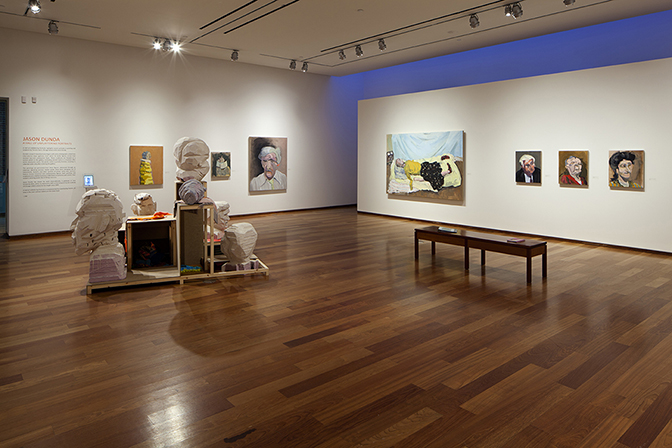
6 December 2018 – 10 March 2019
You recently presented an exhibition, “A hall of unflattering portraits”, at the MacLaren Arts Center in Barrie, Ontario, 2018. Can you walk us through this effort? What was the intent? Who were the subjects?
This is the biggest show I’ve ever done, both in size and scope. This project was about four years in the making and began with an invitation to work with the Sovfoto archive, which is a massive collection of Soviet-era propaganda photos housed at the MacLaren. Their senior curator Emily McKibbon offered me the show soon after – I recall she told me she was interested in how research-heavy my work is without having a one-to-one visual relationship to the images I pay attention to. The show is a survey of paintings, drawings, and sculptures I’ve been doing over the past five years since I began a new project during a residency in Paris. The subjects are a bit of a rogues gallery. There’s Joe Arpaio, a sheriff who was recently pardoned for racially profiling Latinx people in Arizona; Jon Burge, who tortured 132 people while he was a Chicago cop; Mitch McConnell, a literal human pile of shit; and Leo Ryan, a US senator who was the first victim of the Jonestown massacre. I focused on the villains because I need to sublimate my liberal rage. The noble subjects I paid attention to in the show are usually tragic ones. The centerpiece of the show was a stack of busts made of polystyrene foam placed on a multileveled pedestal built with many of the back panels removed, kind of like an old Hollywood studio set. As you walk around this installation the planes of the pedestal disappear – I wanted the space to read like an elaborately fake hall of portraits, all surface and no substance. The busts easily become severed heads and the homage becomes an indictment.
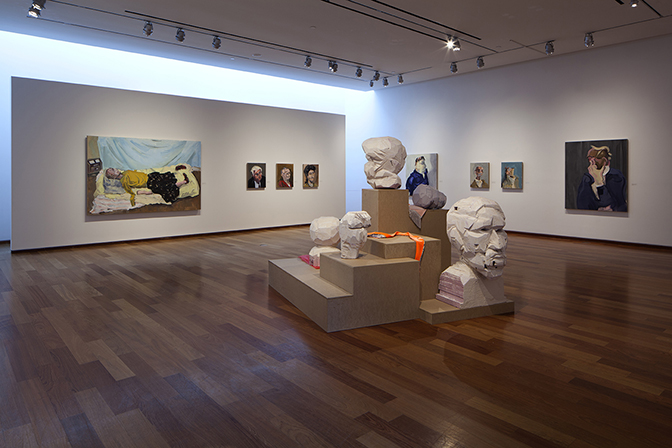
6 December 2018 – 10 March 2019
Though your subject matter differs, I see a direct relationship in your tactile approach with that of some mid 20thc. painters (Frank Auerbach, Lucian Freud). Can we discuss influences? What do you take from the history of portrait painting? How do you see your practice differing or intersecting with these predecessors?
Yeah, I love oil paint – cut me and I bleed damar varnish. I get a lot of comparisons to those mid 20thcentury painters you mention, but I look at a lot of contemporary figure and portrait painters like Judith Linhares, Nicola Tyson, and Trude Vixen, among many others. I pay attention to artists who strike a balance between medium and illusion – when I paint I’m constantly trying to do this dance between a deftly careless (or carelessly deft) use of paint and the image I’m trying to describe. It’s difficult but it’s basically what I think painting is about. I also love early renaissance painters like Giotto and Fra Angelico because they had such wonderfully strange approaches to translating space.
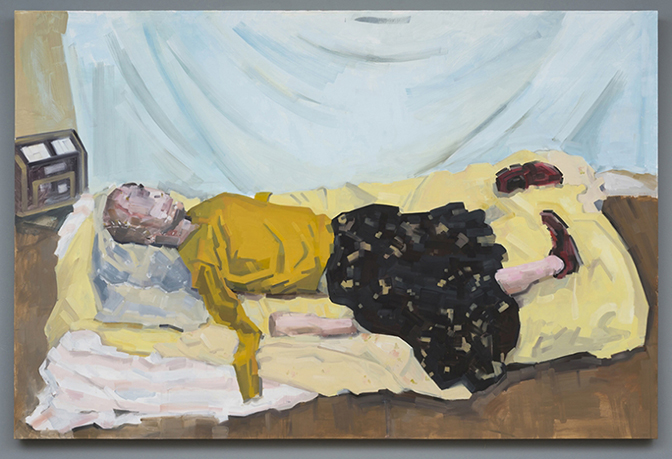
oil on linen, 90 x 60 inches, 2016
You are currently focused upon the imbalance of power structures. What prompted this investigation? Can you discuss the methodology? How do you see these works commenting upon our present day milieu?
I think this is influenced by my stealth foreignness. I’m an expatriate living in a foreign country, but the language and customs are so similar that I pass as American. I experience a subtle culture shock almost daily and I think through this in narratives and problems I choose to examine in my work. Keep in mind that I’m an idealist and a Canadian patriot, so I think even the most conservative Canadian wouldn’t tolerate Joe Arpaio’s racist immoral actions nor the system that supports and celebrates him. Stephanie Flowers’ heartbreakingly earnest rage toward stand your ground laws is shocking to me because I grew up in a culture where a politician doesn’t have to explain to people that she’s afraid her son is going to be legally killed for being black. I don’t have the power to fix anything so I choose to immerse myself in the problems.
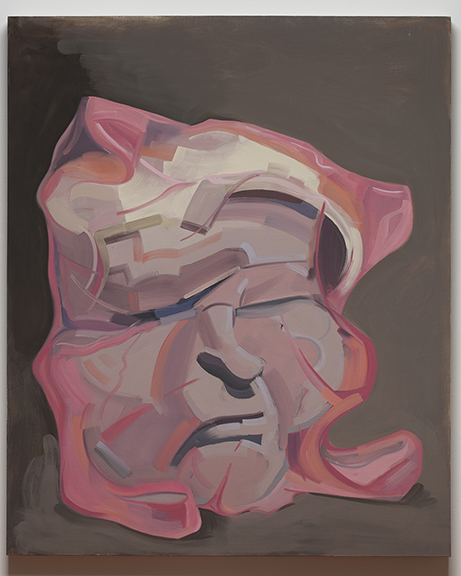
You have amassed a rather extensive body of works on paper. There is content and formal elements that appear to overlap with your paintings and sculptures. However, I tend to see these works differing due to the limited color palette and a sense of spontaneity. Do you see these pieces as merely preparatory examinations? Can you discuss these works in contrast to your paintings?
They are and aren’t related to the paintings. There’s very little at stake for me with the works on paper and they’re a good way to start a studio day. I also use the them as an editing tool. I draw an image that interests me – most often a portrait – over and over again very quickly so that I can build some sort of muscle memory in the gesture and see the subtle differences that occur in repetition. When I’m making an oil painting I use selections from the drawings as well as photo references and sculptural busts I carve out of polystyrene foam. I don’t want to rely on a single source for an oil painting because it often turns out looking stale and forced.
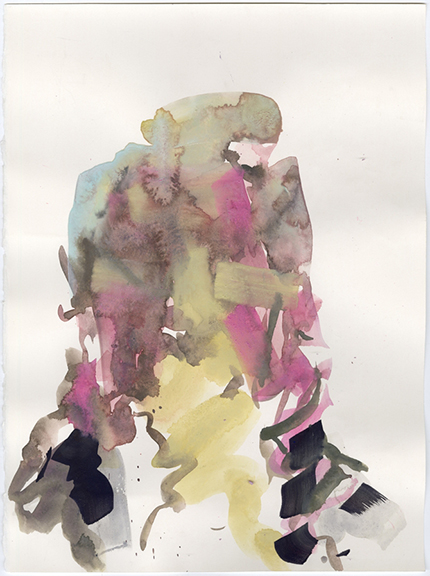
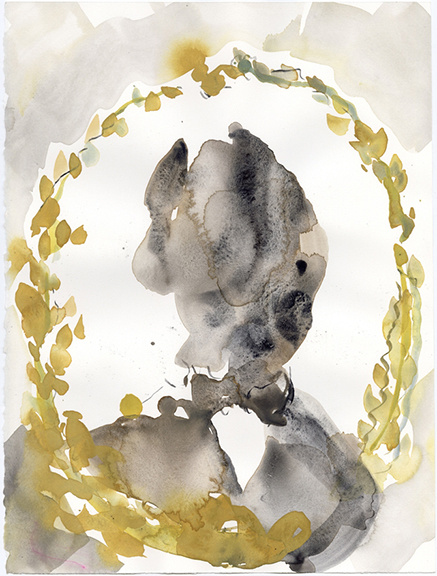
What do you value most in your studio practice?
That’s such a tough question because it’s so big yet so simple. My relationship to materials is such a huge and natural thing for me – I’ve committed myself to constant learning and building mastery while trying to hack whatever I’m using to do something it shouldn’t do. I once spent an entire summer learning how to impregnate large scale printmaking paper surfaces with gouache so I could mimic my favourite colour of paper. I drive myself to distraction doing things like this.
I also fundamentally believe that I communicate best through images, materials, and context. I grew up the youngest member of a family where everyone else for some reason or another monopolized the attention so as a rule I was not heard and often not really spoken to. Direct engagement was useless so I became drawn to the indirect communication of metaphor and making a thing I leave behind to be contemplated in my absence. There’s a stealthy nature to art – it sits there until someone gives enough of a damn to pay attention to it, and in my case there’s a hug and a slap in it for you when you do.
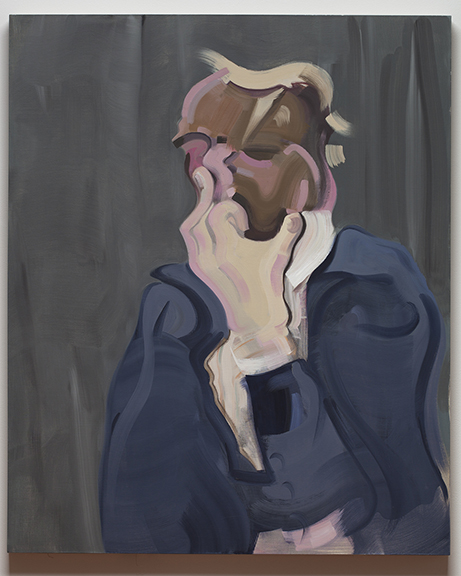
You also teach in the Department of Contemporary Practices at SAIC. I’m wondering if you see any overlap with this activity and your professional practice? Also, are there any specific items you see yourself regularly sharing with your students?
There’s tons of overlap between my studio practice and my teaching. SAIC’s Contemporary Practices department is essentially the first year program. It’s multidisciplinary and research-based so after 15 years of teaching there my practice has for some reason become multidisciplinary and research-based. I actually feel like teaching has been my equivalent of a doctoral program in studio art. Being immersed in that rigorous environment and working closely with so many outstanding students and faculty has definitely made me a better artist. My students actually don’t see much of my studio practice, at least not at first and not any sort of final results. I share with them my materials tests, my source material, and anything else I make or gather that ultimately tells me what that final result should be. I don’t want to impose my aesthetic on my students – my project is to give them a set of tools to make a number of specific choices that can lead them to authentic and often unexpected results.
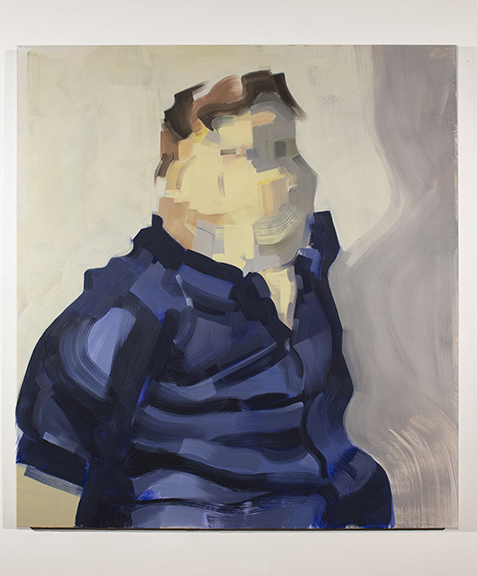
42 x46 inches, 2016
2019-2020 appear to be a rather busy time. You are preparing works for two solo projects, one at FLXST and another at Sidecar? What’s the plan? When and where will these two viewing opportunities drop?
FLXST will happen in September – I’ll have five brand new paintings and a handful of drawings there. Sidecar will possibly be spring 2020 but we haven’t quite locked it down. FLXST will be a straightforward painting show but Sidecar will likely involve some sort of bonkers installation in the attic in addition to a more traditional presentation in the main space. I’m really excited about it.
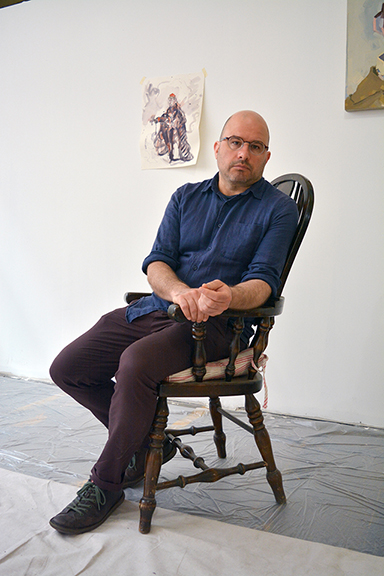
For additional information on the aesthetic practice of Jason Dunda, please visit:
Jason Dunda – http://jasondunda.com
Art Slant – https://www.artslant.com/global/artists/show/51650-jason-dunda?tab=PROFILE
Hyde Park Art Center – https://www.hydeparkart.org/directory/jason-dunda/
New American Painting – https://www.newamericanpaintings.com/artists/jason-dunda
Canadian Art – https://canadianart.ca/agenda/jason-dunda-a-hall-of-unflattering-portraits/
Bad at Sports – http://badatsports.com/2011/a-testy-medium-an-interview-with-jason-dunda/
Artist interview and portrait by Chester Alamo-Costello


